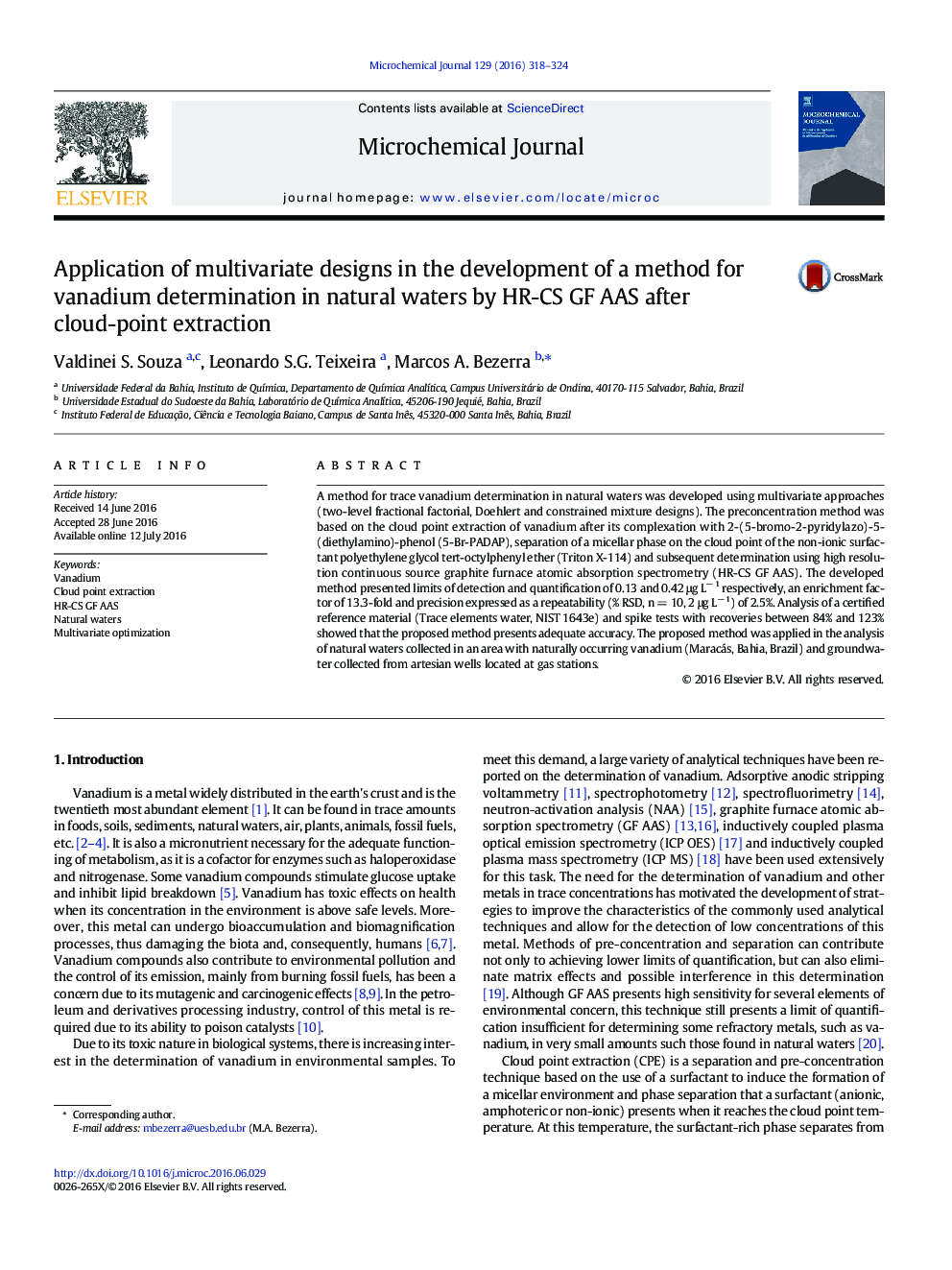| Article ID | Journal | Published Year | Pages | File Type |
|---|---|---|---|---|
| 1227625 | Microchemical Journal | 2016 | 7 Pages |
•Multivariate techniques were applied in the development of a method for trace vanadium determination from natural waters;•High resolution continuous source GF AAS was used for vanadium determination after cloud-point extraction;•The developed method presented limits of quantification of 0.42 µg L–1 and an enrichment factor of 13.3-fold;•The method was successfully applied in the vanadium determination from natural waters.
A method for trace vanadium determination in natural waters was developed using multivariate approaches (two-level fractional factorial, Doehlert and constrained mixture designs). The preconcentration method was based on the cloud point extraction of vanadium after its complexation with 2-(5-bromo-2-pyridylazo)-5-(diethylamino)-phenol (5-Br-PADAP), separation of a micellar phase on the cloud point of the non-ionic surfactant polyethylene glycol tert-octylphenyl ether (Triton X-114) and subsequent determination using high resolution continuous source graphite furnace atomic absorption spectrometry (HR-CS GF AAS). The developed method presented limits of detection and quantification of 0.13 and 0.42 μg L− 1 respectively, an enrichment factor of 13.3-fold and precision expressed as a repeatability (% RSD, n = 10, 2 μg L− 1) of 2.5%. Analysis of a certified reference material (Trace elements water, NIST 1643e) and spike tests with recoveries between 84% and 123% showed that the proposed method presents adequate accuracy. The proposed method was applied in the analysis of natural waters collected in an area with naturally occurring vanadium (Maracás, Bahia, Brazil) and groundwater collected from artesian wells located at gas stations.
